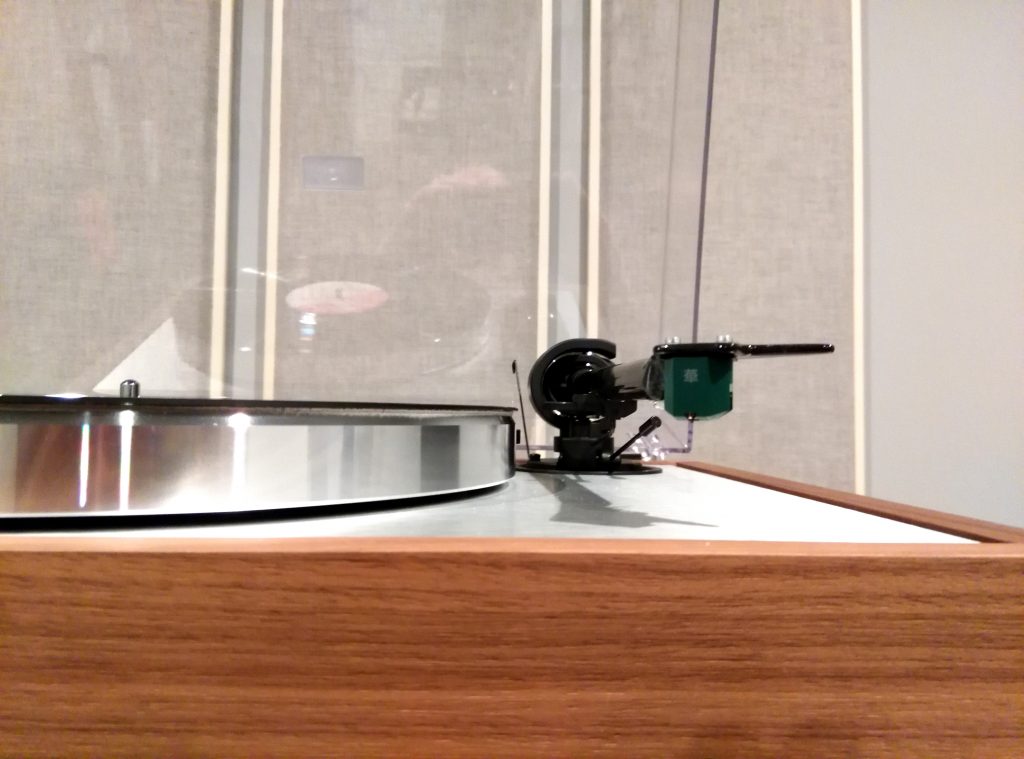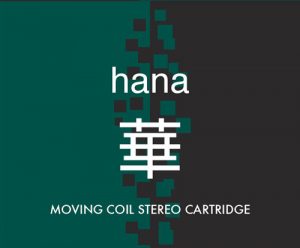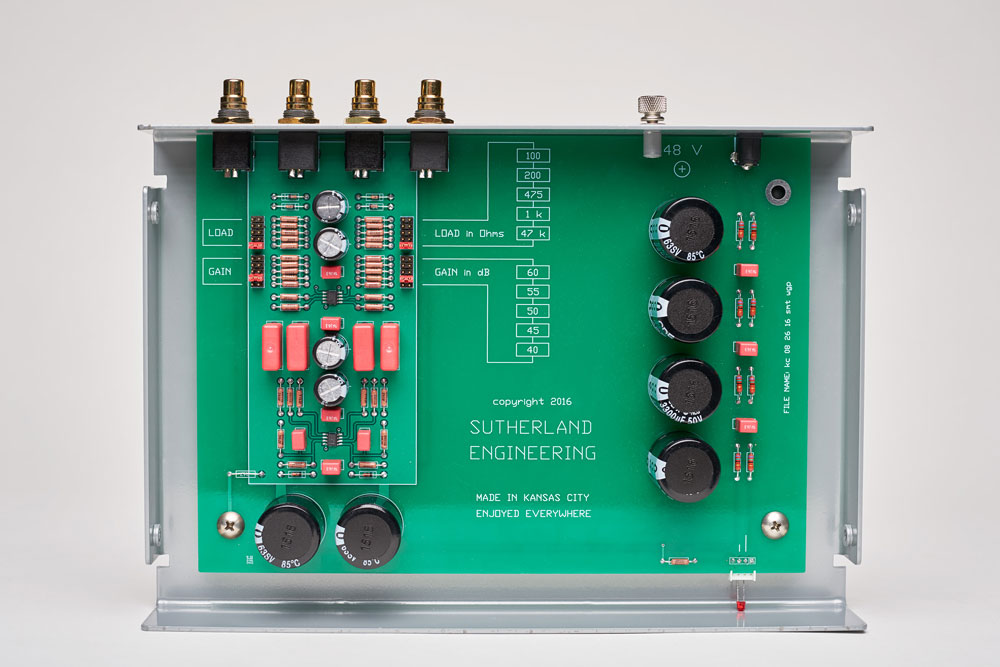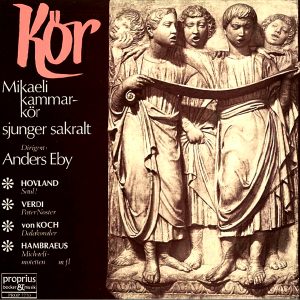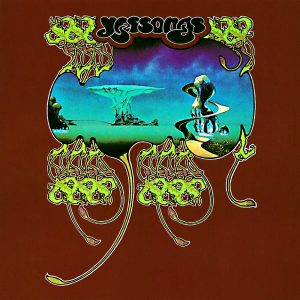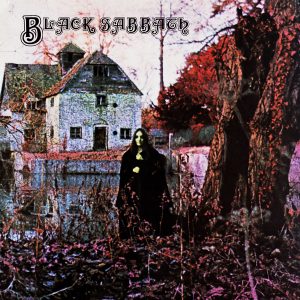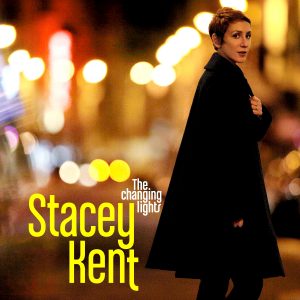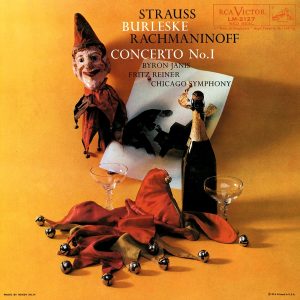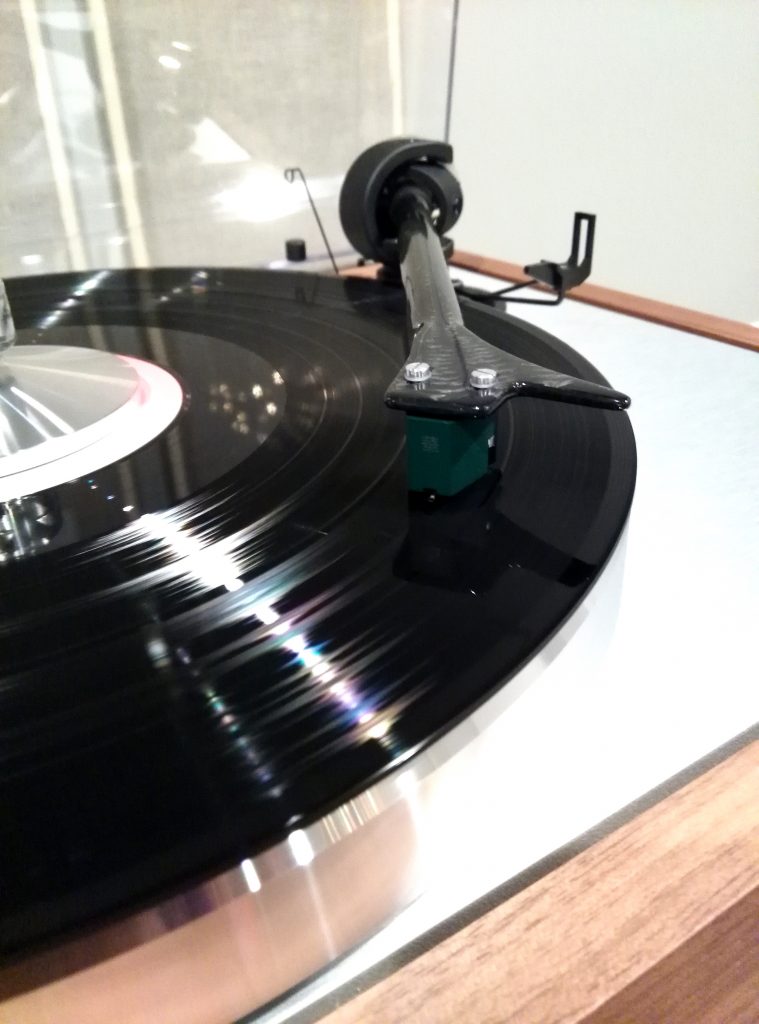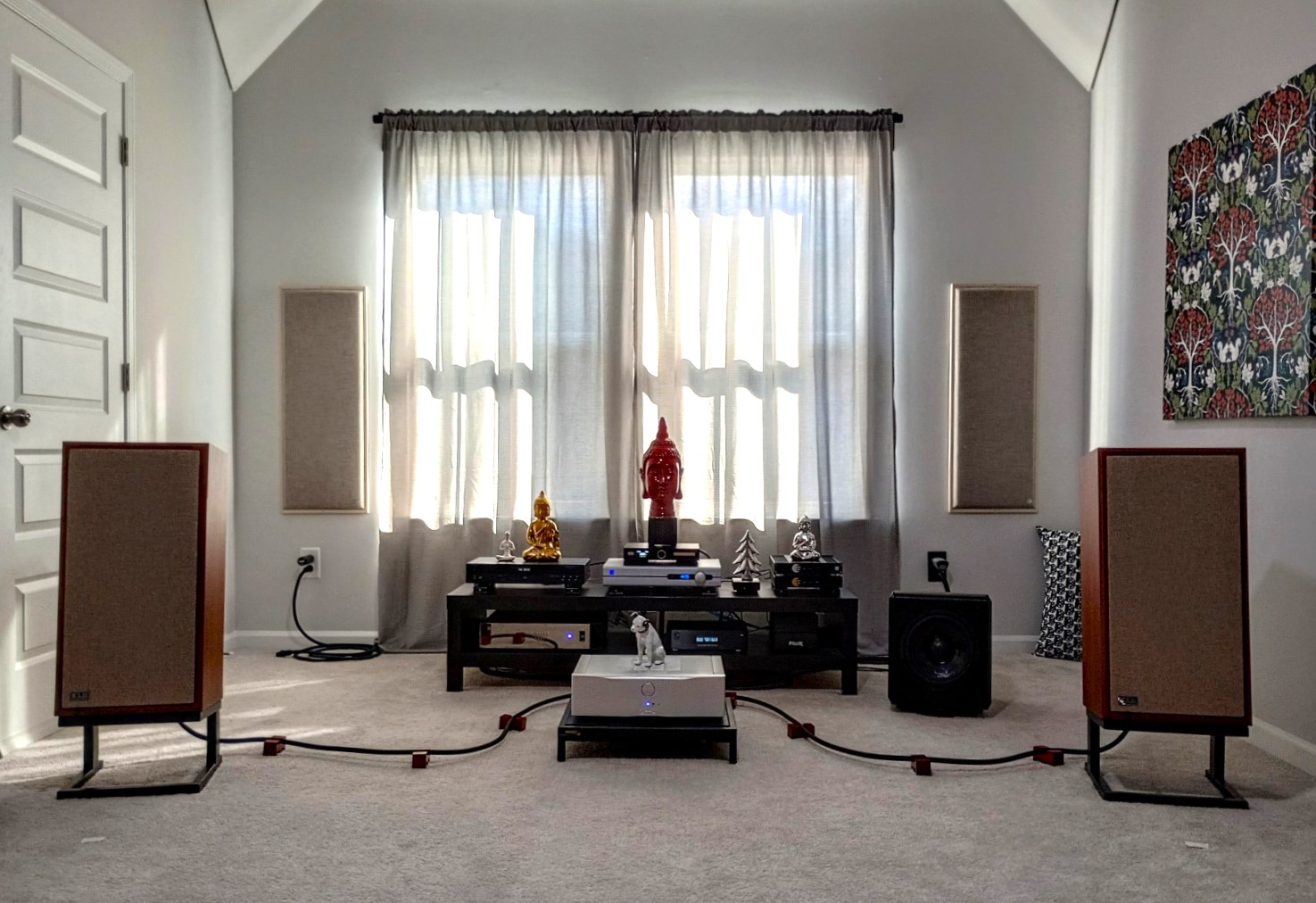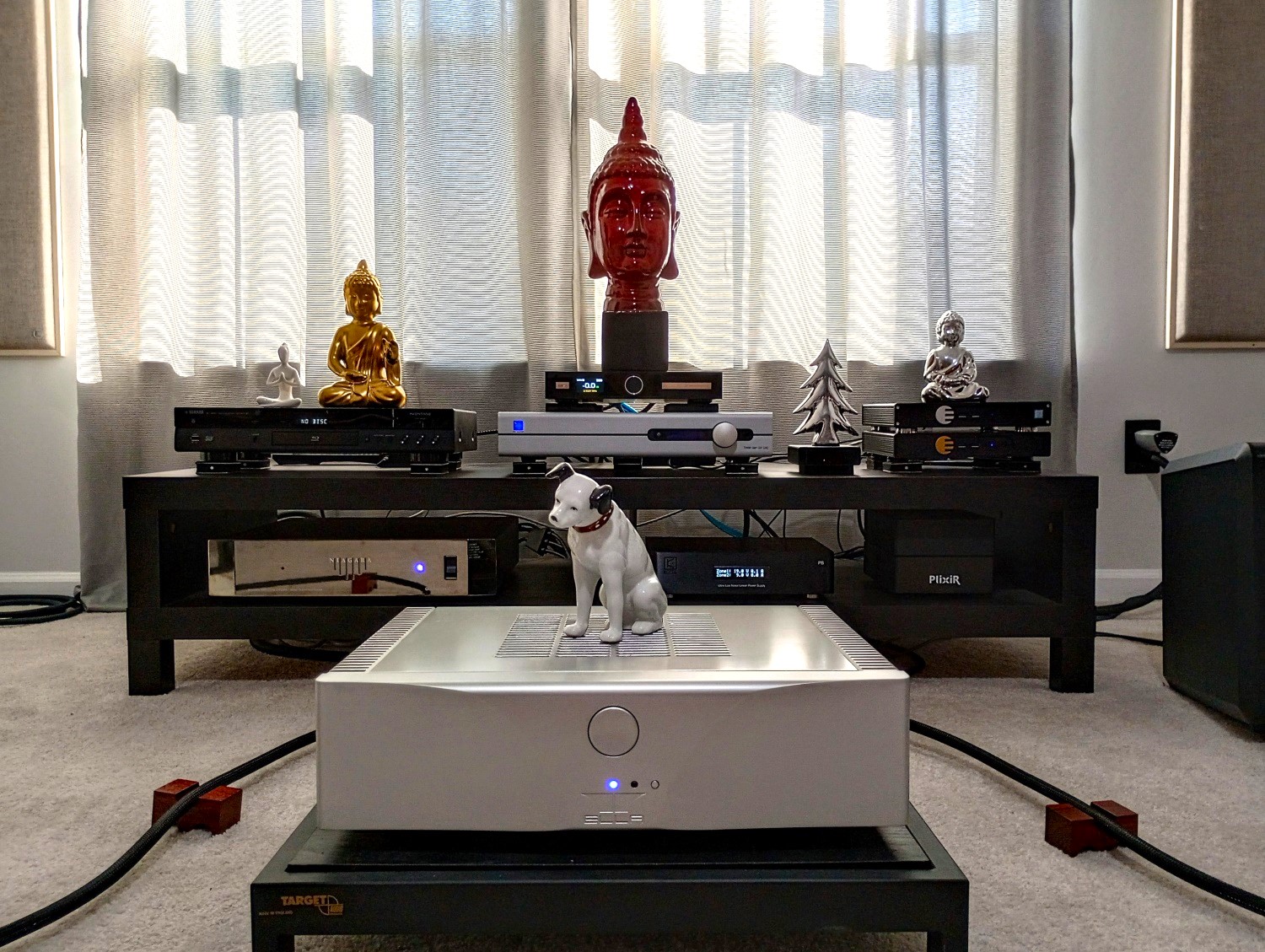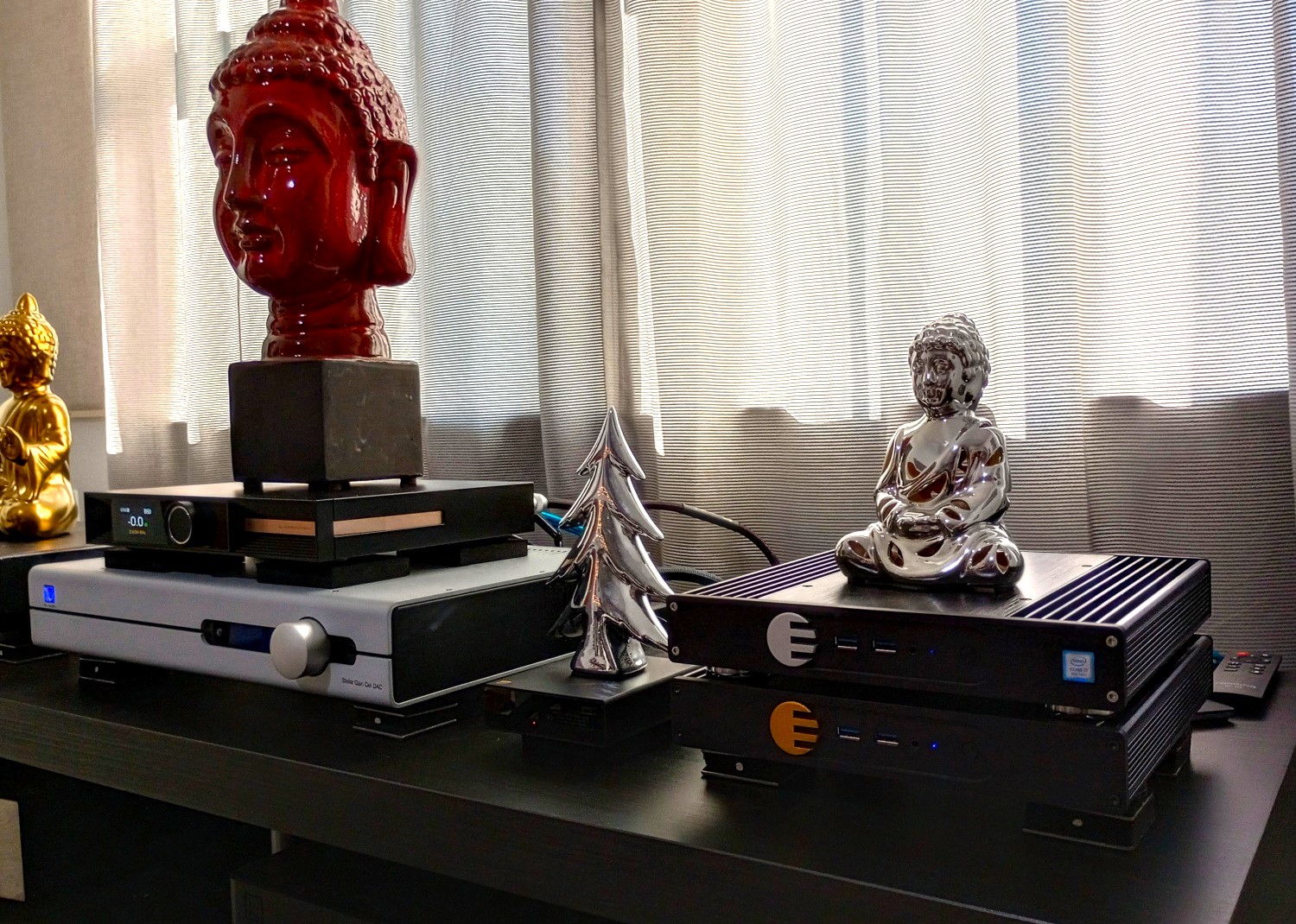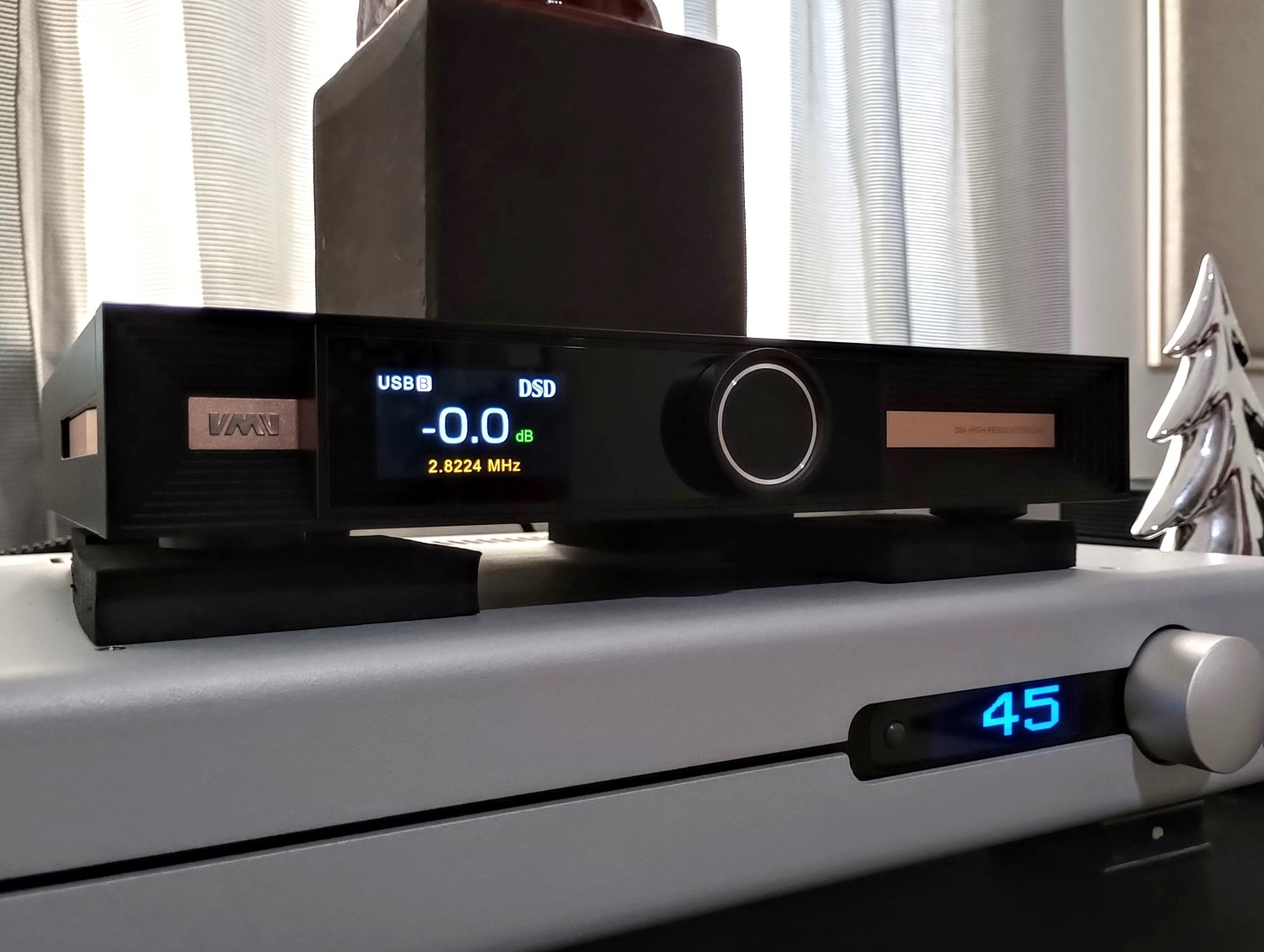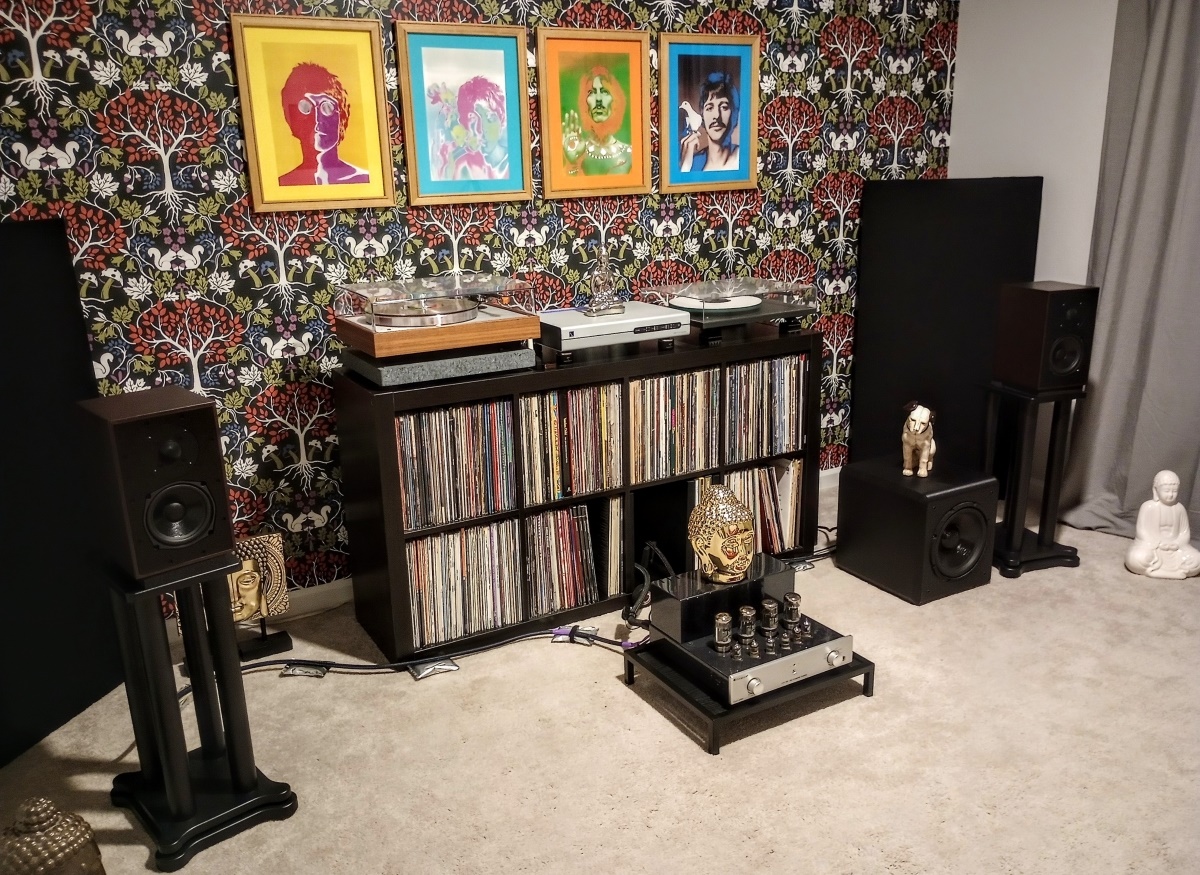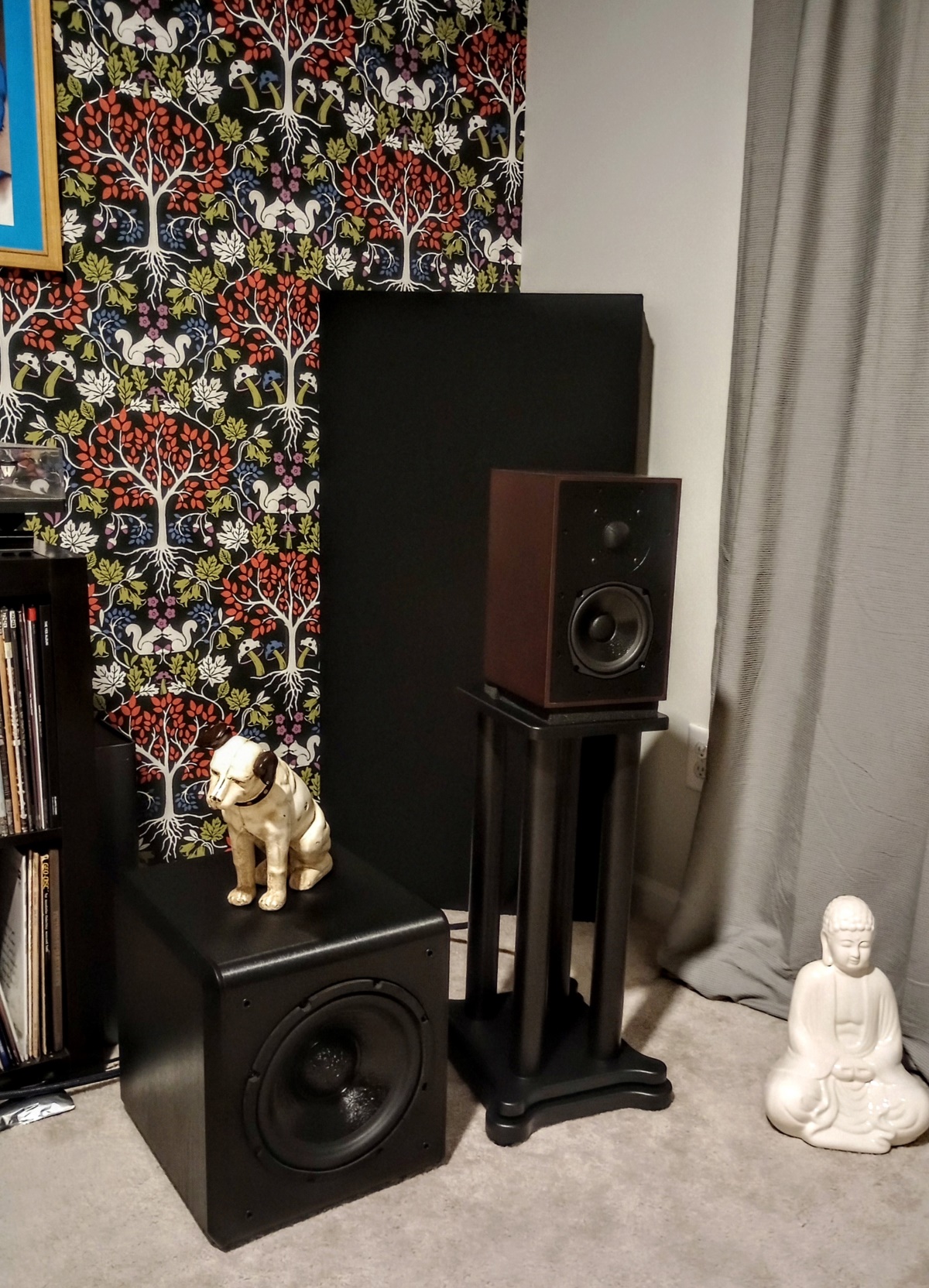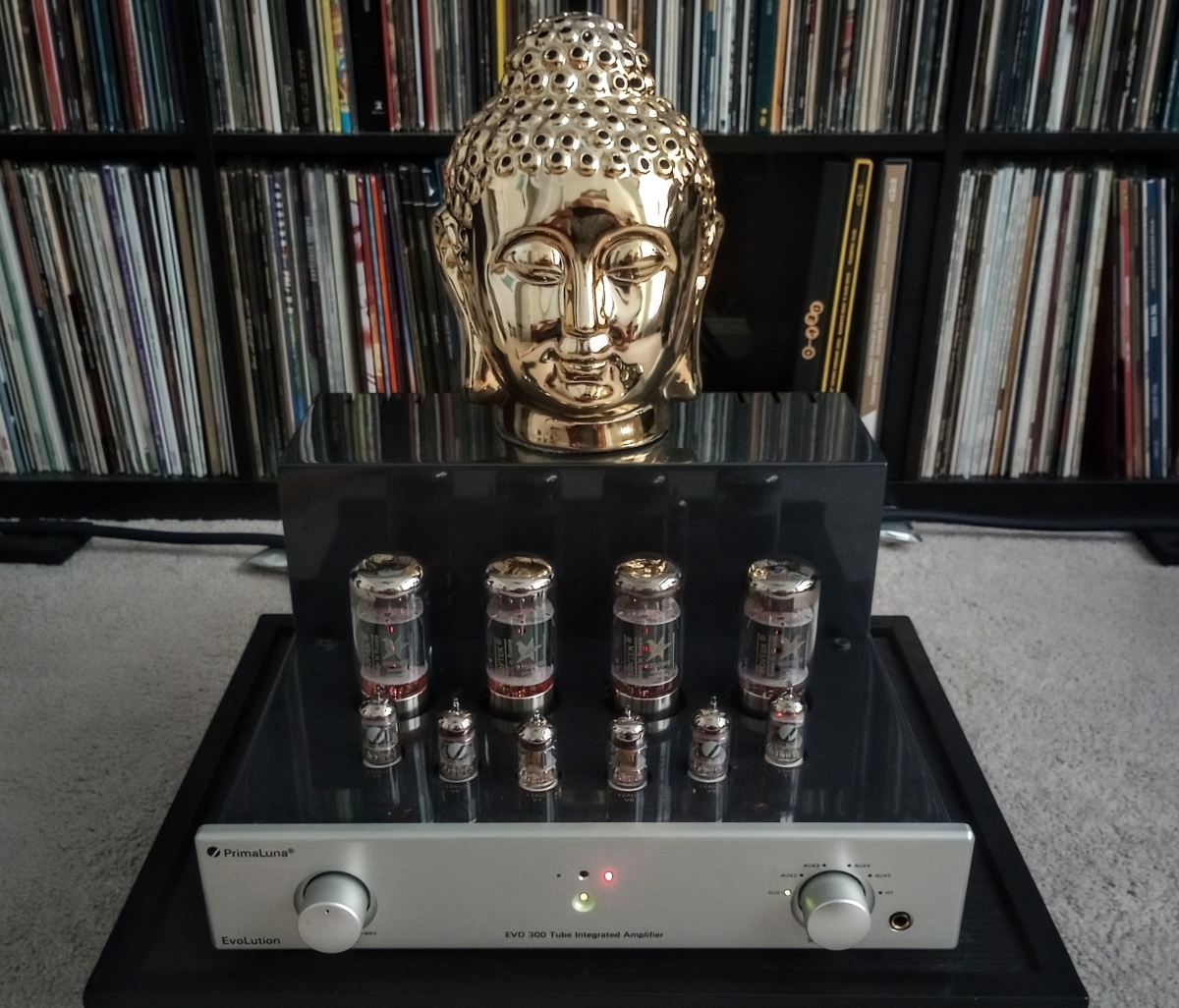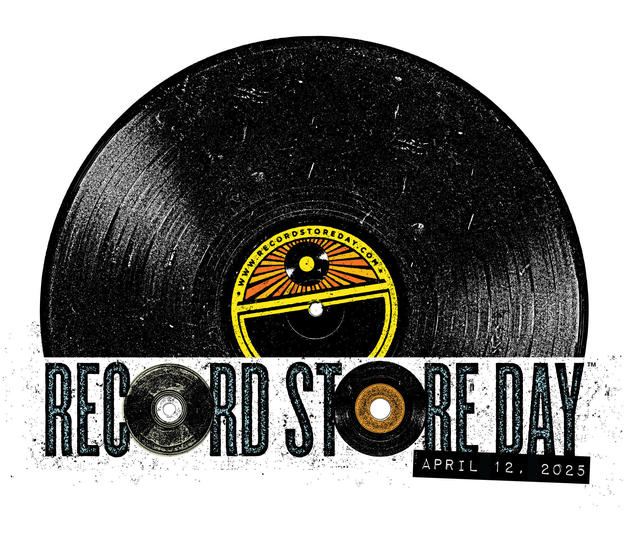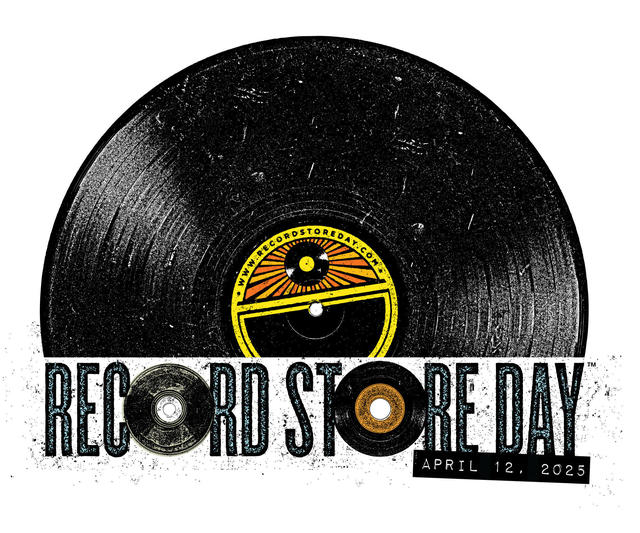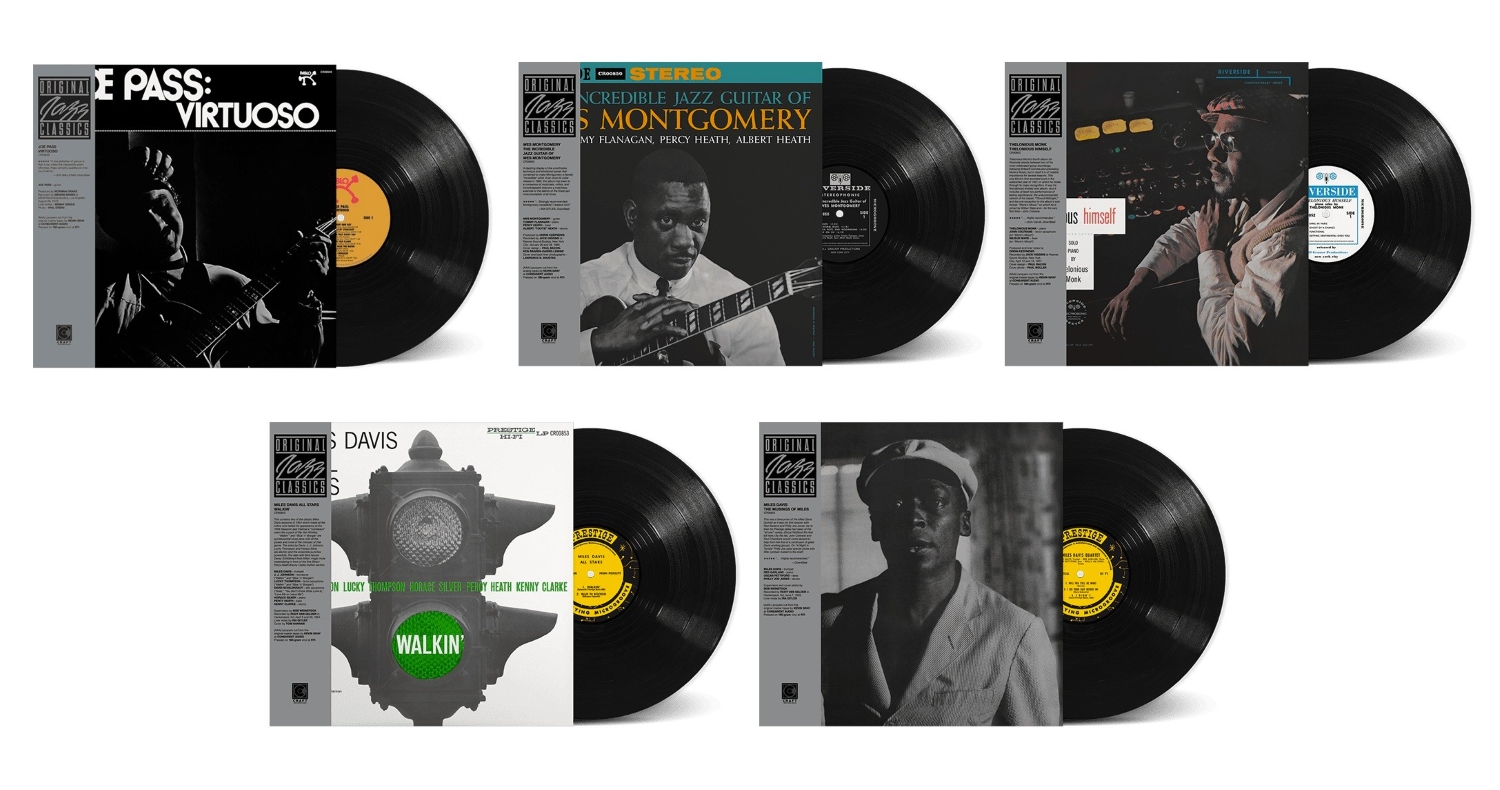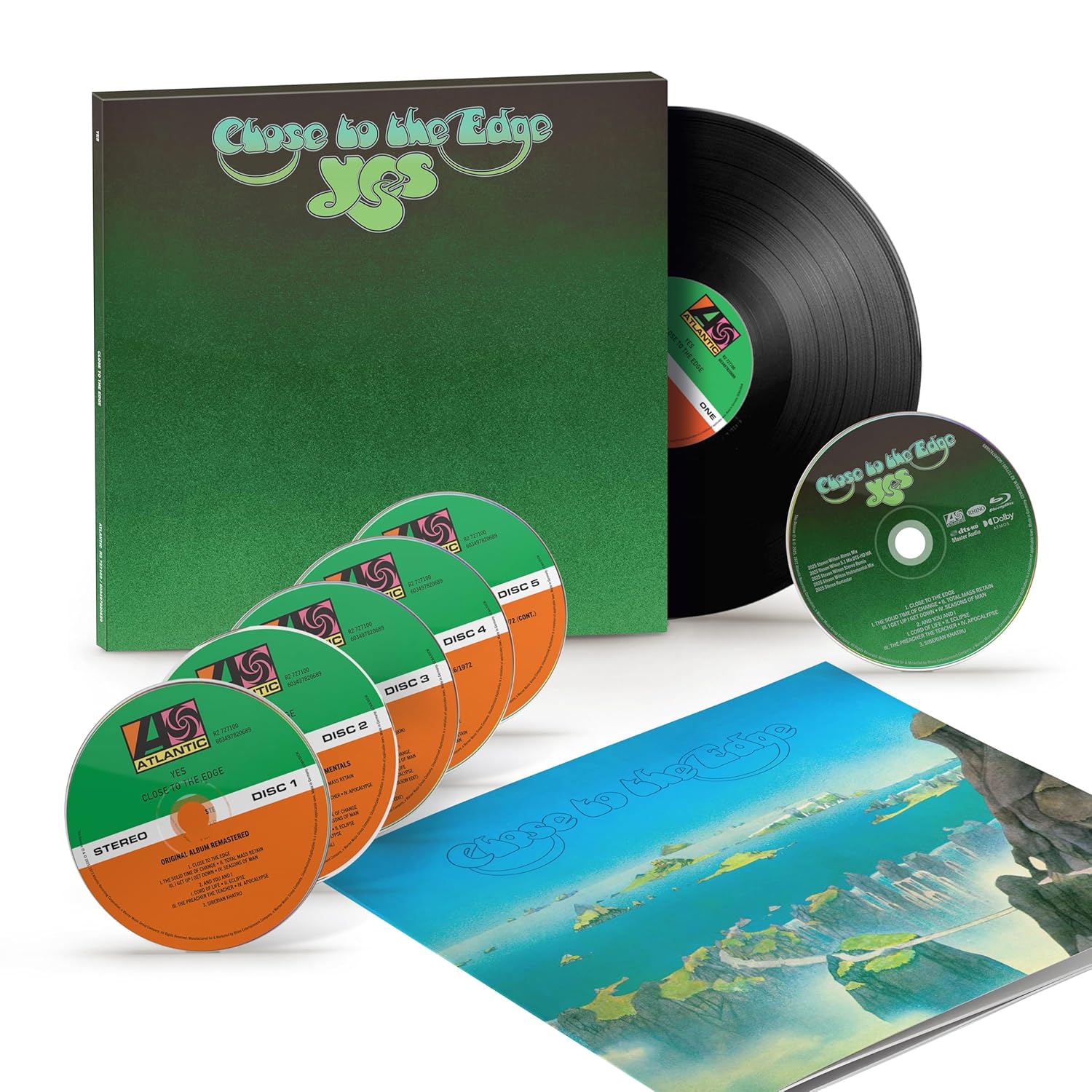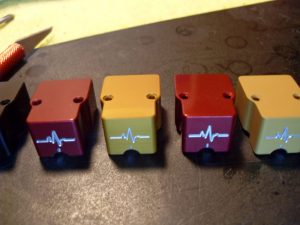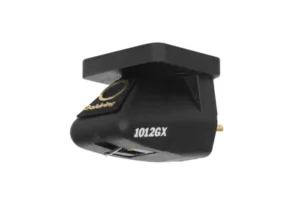Late last year, I had a tremendous review opportunity that focused on ProJect's The Classic turntable; unbeknownst to me, the review unit arrived as the heavily upgraded Superpack SB edition. Which, along with electronic speed control and other really nice goodies thrown in, also came with a Sumiko Blue Point No. 2 cartridge attached to the table's carbon fibre/aluminum composite arm. This came as quite a surprise to me; I was only expecting the baseline model, which is still a great table with really good bones. The baseline model was to come with an attached Ortofon cartridge from the 2M line, but I was hoping to offer readers a glimpse of what The Classic was truly capable of with a seriously better cartridge. One with high-end aspirations, like one from the new Hana moving coil line. The review setup would also include Sutherland's new KC Vibe phono preamplifier (review forthcoming), and I reached out to Garth Leerer at Musical Surroundings, Hana's US Distributor, prior to The Classic's arrival. Garth graciously agreed to send the Hana EL, attractively priced at $475 USD, which is their elliptically-tipped, low-output model (hence, the "EL" designation).
There was a bit of a mix-up right out of the gate; the Musical Surroundings staff was preparing for the upcoming RMAF show, and inadvertently shipped the wrong cartridge. The several weeks that passed in between the return of the first cartridge and the arrival of the Hana EL gave me some time to take a listen to the supplied Sumiko cartridge, which—despite my obvious reservations—is a really decent cartridge. The Blue Point No. 2 has been seriously maligned over the years; I've read a ton of love/hate reviews. But at its $449 USD MSRP, I can't help but feel that it's a bit overpriced for what you get. Which was not the kind of involving, gripping LP playback I was hoping for. The Classic (especially in the Superpack SB incarnation) is a really elegant table, and the attached composite arm is one of the best I've ever had the pleasure to experience. I really wanted the review to reflect the very best of affordable analog technology currently available (you can read my review HERE). And I really wanted to experience an affordable, but world-class moving coil cartridge as part of the overall review process.
Hana cartridges are manufactured by the Excel Sound Corporation of Japan; they've made quite a name for themselves as OEM suppliers to many other well-regarded brands over a 45-year-plus period. With the Hana line (Hana's English translation is brilliant and gorgeous), they've finally made their own offerings available to the public. All four models in the Hana line are moving coils, and share much of the same internal technology. The big differences being the coil windings that determine choice of output level (High or Low) and stylus configuration (Elliptical or Shibata). The $475 price point of the EL reviewed here falls squarely in my comfort zone for a cartridge with higher-end pretensions; $750 for the Hana SL with its Shibata stylus takes it just a bit beyond what I can honestly justify—at least in my relatively modest system, anyway.
When the Hana EL cartridge eventually arrived I was eager to get underway, but first, I took a quick look at the stylus with the 40x mini-microscope I recently acquired from Parts Express. There's no specification given for the stylus tip dimensions for any of the Hana cartridge models on the Hana page of the Musical Surroundings website, or in the supplied leaflet (or anywhere, for that matter!); I was more curious than anything to see what the stylus looked like. The aluminum cantilever, while seemingly otherwise unremarkable, is remarkably small; and the nude elliptical diamond is probably the most microscopic nude elliptical tip I've ever seen. Stated trackability is rated fairly high; we'll see how it goes!
Also, prior to setup, I opened the case of the Sutherland KC Vibe phono preamp, to make the necessary jumper adjustments for the Hana EL. The KC Vibe had had arrived about the same time as The Classic; and I checked with Ron Sutherland for his recommendations for setup with the EL. The KC Vibe, while significantly more tailorable than many budget phono preamplifiers (and built like a tank by comparison!), offers fewer setup options than Sutherlands' more esoteric and higher-end offerings. Hana's spec sheet calls for a load setting of >400 ohms; the KC Vibe's nearest choice is 470 ohms, but Ron assured me that the combination should work perfectly. The Hana EL has slightly a higher than usual output of .5mV compared to most low-output moving coil carts; I played about with the settings, but ultimately chose the 60dB gain setting, which thus far has been perfect for all my listening.
I pulled out my MoFi Geo Disc and proceeded to remove the attached Blue Point and with setup of the Hana. The Hana EL is somewhat lighter than the Blue Point, weighing in at only 5 grams compared to the Blue Point's 6.3 grams. But with a supplied spacer in place, the heavyish counterweight supplied with The Classic was soon balanced perfectly. I've found with many years of use that the Geo Disc is a really accurate alignment tool, and it only took a short while to get the Hana mounted properly. No help from ProJect in this respect of the experience; if you read my review, you know that the one glaring omission on The Classic is the lack of any kind of clamp on the arm rest. Thank god for the really sturdy twist-ties that come packed with just about everything these days! Seriously! Anyway, I set the tracking force to 2 grams as recommended by the manufacturer—I just got one of those electronic stylus gauges, and they're well worth the $25 or so they sell for on eBay. With the spacer in place, the cartridge body height of the Hana matches that of the Blue Point almost perfectly, so once aligned, I didn't feel any need to adjust the VTA. Let's play some records!
Over the last ten years or so, I've collected (and inherited!) hundreds of records, old and new. And I've developed a fairly good method for cleaning older records such that, unless damaged irreparably, generally playback with surprising clarity. That said, when you truly love the vinyl playback experience, you tend to accept the inevitable pops, ticks, and other assorted warts that accompany the playback ritual. Playing an LP record is a ritual; cleaning, brushing, and stylus care are only part of the overall process. Despite the level of care and involvement, the reward is hearing your favorite records played with utmost fidelity; it can be quite nearly comparable to hearing the actual source tape played. Everything contributes; the tonearm and table, the phono preamplifier, and (quite possibly) most importantly, the cartridge. A really great cartridge has the capacity to elevate your system exponentially.
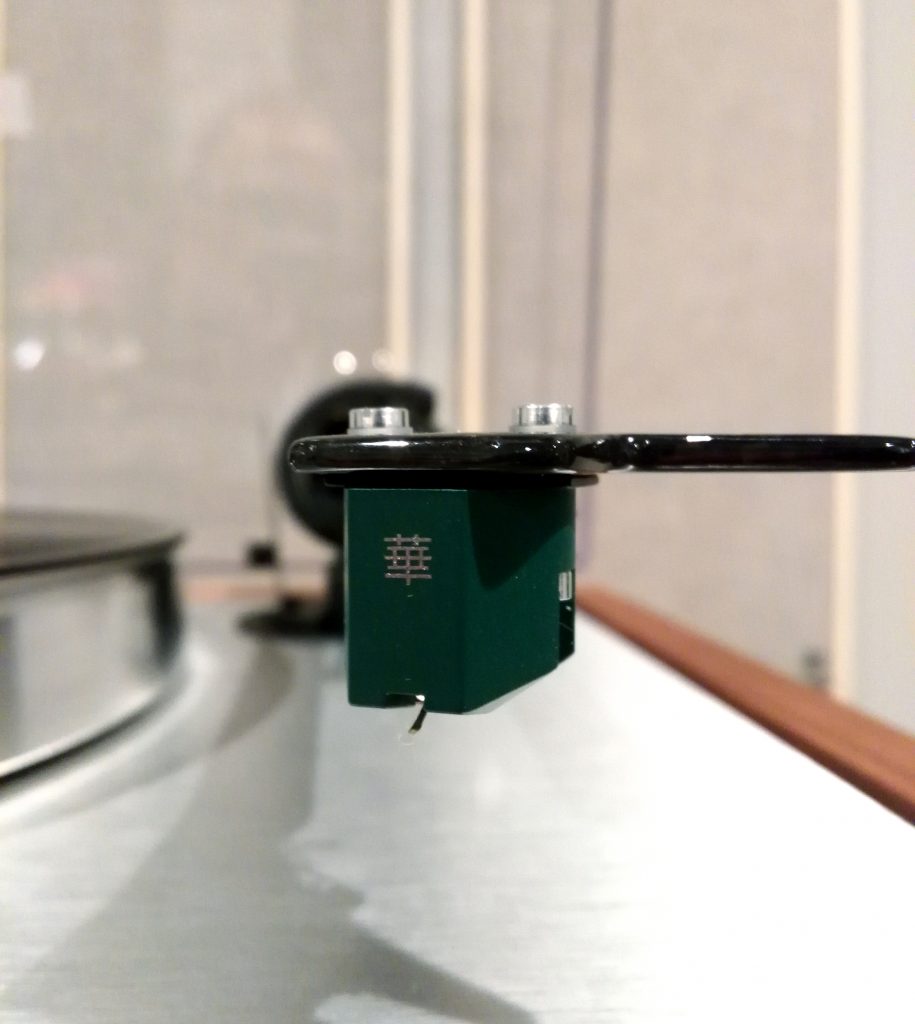 In my relatively modest, sub-$2.5K analog front end (that still reaches for the stars!), the Hana EL is undeniably that cartridge. At its asking price of $475, it's an exceptional value. As I began to play the same records that I'd been playing throughout the previous month via the Blue Point No. 2, I couldn't help but notice that the Hana EL did so very many things so very well that essentially left the Sumiko cartridge sounding, if anything, very plain vanilla. The Hana seemed a touch stiff out of the gate, but it didn't seem to take much in terms of run-in time (a month or so of heavy playback) for the sound to reach a perfect and consistent stasis. The EL's elliptical stylus tip does a remarkable job of tracing the record grooves; I'm a long-time fan of Denon cartridges, whose elliptically tipped lower-priced cartridges are noted for their tracking abilities and musicality. I'd easily give the Hana EL the nod over the Denon DL110 that's currently in the arm of my Rega P2 table; in terms of musicality and retrieval of detail, the Hana wins in spades. That's not a true apples-to-apples comparison; the Hana almost doubles the DL110's MSRP, but my point is that you can get truly satisfying results from an elliptically-tipped cartridge.
In my relatively modest, sub-$2.5K analog front end (that still reaches for the stars!), the Hana EL is undeniably that cartridge. At its asking price of $475, it's an exceptional value. As I began to play the same records that I'd been playing throughout the previous month via the Blue Point No. 2, I couldn't help but notice that the Hana EL did so very many things so very well that essentially left the Sumiko cartridge sounding, if anything, very plain vanilla. The Hana seemed a touch stiff out of the gate, but it didn't seem to take much in terms of run-in time (a month or so of heavy playback) for the sound to reach a perfect and consistent stasis. The EL's elliptical stylus tip does a remarkable job of tracing the record grooves; I'm a long-time fan of Denon cartridges, whose elliptically tipped lower-priced cartridges are noted for their tracking abilities and musicality. I'd easily give the Hana EL the nod over the Denon DL110 that's currently in the arm of my Rega P2 table; in terms of musicality and retrieval of detail, the Hana wins in spades. That's not a true apples-to-apples comparison; the Hana almost doubles the DL110's MSRP, but my point is that you can get truly satisfying results from an elliptically-tipped cartridge.
One of my all-time favorite LPs is Kor, on the Proprius label (catalog no. 7770), a mid-seventies choral recording featuring the Mikaeli Kammorkor (St. Michael's Chamber Choir) of Stockholm, Sweden. Proprius made some of the greatest and most natural-sounding recordings of the era (or any era, for that matter!), but they tended to suffer from various quality control issues, and the pressings were frequently noisy. Side one of Kor suffers additionally from trying to cram too much music into the LP side, with the final track (movement three of Cesar Geoffray's "Tryptique Marial"—try finding that in any format anywhere!) running way too close to the label area. So, definitely a litany of playback issues; thank God the music was so great!
I've never owned a turntable/arm/cartridge combination that will actually track through this torture test without serious distortion or without the music seeming totally forced. Hearing this album through The Classic/Hana EL combination was nothing short of miraculous; I've heard this LP countless times, yet never with the clarity or effortlessness offered here. I've actually played this record at least a dozen times over the last few months, with each listen quite literally seeming like hearing it for the very first time. The very small profile of the EL's elliptical stylus must ride very deeply within the LP's groove, allowing for a level of musicality heretofore unheard in my system; any pops and clicks were significantly minimized. So much so, that I found them to be considerably less intrusive than with other cartridges. With tracking this great, I don't really feel that I'm missing whatever advantages might be brought by the extra $275 jump to the Shibata stylus of the Hana SL model (although I'm sure it sounds magnificent!). Brilliant, indeed!
The really great thing about the Hana EL is that it seems to draw you further into the music; instead of simply listening to a great record with the Blue Point No. 2, listening through the Hana makes you feel as though you're part of the experience. There's a much greater degree of delicacy and transparency involved; whereas before, you were just thinking how great the record sounded, with the Hana, you tend to forget you're listening to a record. Even with older or recently purchased used records, the Hana traverses the record groove and maximizes the music while minimizing any flaws or groove noise. The Hana literally transports you to the recording venue; it's like way, way back in the day, when my buddies and I would use certain herbal substances to enhance our listening sessions. My mind had been freed, allowing me to hear much more deeply into the music, while having the music seemingly affecting all my senses simultaneously. With the Hana EL, no herbal supplements are necessary to get the same effect. With an excellent analogue setup like ProJect's The Classic paired with the Hana EL—that totally blows away any previous vinyl playback rig I've ever owned in the past—it's probably a good thing that I don't live in Colorado or California!!
The Hana also provides gobs of deep, tuneful bass; I noticed this immediately. I'm a bit of a progger, and Yes bassist Chris Squire was and will always be my main man. But I've always felt that producer Eddie Offord did him something of an injustice by not getting more of that Rickenbacker sound into the grooves of those early Yes albums! To say that I've been blown away by the bass coming from my system with the Hana EL in place is a complete understatement. Fragile and Close To The Edge now rock out like never before. Squire's bass solo, "The Fish (Schindleria Praematurus)" from my original pressing of the classic Yessongs live album pours forth from my system with power and authority like never before. Yessongs, despite the riveting live performances, has never been a particularly great sounding album; I bought the 24/192 download a couple of years ago with the hopes that it would improve significantly on the vinyl original. No dice, but now, at least, the vinyl sounds better than ever!
Last year I picked up the first four Black Sabbath repressings on QRP; all on cool, colored 180 gram pressings with heavy jackets and gloriously quiet playback (by quiet, of course, I mean absence of groove noise!) that rivals that of MFSLs for their near zero surface noise. Remastered from the original tapes, listening to them via The Classic/Hana EL combination has been a complete revelation. Geezer Butler's seemingly nonexistent bass through other arm/cartridge combinations is at last is getting the kind of tone and volume through the Hana that's been woefully absent from my analog system for years! I've actually had to adjust both subwoofer levels slightly downward, which, prior to the arrival of the Hana, I was certain had been perfectly dialed in.
I listen to a lot of jazz and jazz vocals as well, and it's important to me that my analog setup is able to convey the human voice with lots of liquidity and midrange sparkle. An album that delivers that in spades is vocalist Stacey Kent's The Changing Lights (Pure Pleasure Analog/Candid 17529), but I need to qualify that recommendation, because my enthusiasm for this record is heavily based on my uncompressed FLAC rip of the excellent CD. Over the last decade or so, Stacey Kent has offered some of the finest performances of standards and the Great American songbook that have been committed to tape in an ever-crowded field of singers. Her talented husband, sax player Jim Tomlinson, orchestrates and arranges the music throughout, and the performances are filled with his remarkable playing. The Changing Lights is somewhat of a departure for Stacey Kent; it further explores her love of the Bossa Nova oeuvre, and includes new works as well as classic standards of the genre.
A couple of years ago, I received a review copy of the two-LP set from Pure Pleasure Records, a gorgeous 200 gram LP set with a beautiful heavyweight jacket that retails for around $40 USD. My review was basically a rave—mostly based on the excellent performances—but I totally felt that the sound quality was compromised and somewhat substandard from a perfectionist label like Pure Pleasure. The record had one notable flaw, an excessively long pop-scratch on side 3 that's totally unacceptable for the label and at the asking price. I thought it would at the very least be instructive to take another listen to this otherwise excellent set through the Hana EL.
Zow! Side three of the album starts off with the charming title track, which is one of the newer songs featured on the album, and with any luck will become a new standard on its own merit. Stacey Kent's magical voice and intonation comes across with room-filling, you-are-there realism; it's hard for me to imagine a more gripping performance, and Jim Tomlinson's sax solo is to die for. The song is followed by what is probably my favorite version of the Jobim chestnut "How Insensitive"; Stacey Kent's way with this classic tune is both sultry and idiomatic at the same time. Side three ends with the old Tin Pan Alley classic "Smile", which is rendered with absolute tenderness. I'd give the album a 10-out-of-10 based on the sound quality and performance.
The absolute stunner here for me is that the almost side-long, pop-scratch-of-death that was so prominent with this record on my Rega P2 with it's then attached Ortofon 2M Blue cartridge was virtually MIA. In a few places in the song "Smile" and in the lead-out groove, you could hear the pop repeat, but at a much lower level, and totally below the threshold of the music as it played. That's right—whatever the magic button was here, whether the exceptionally tiny cantilever and stylus tip, or the contribution of the excellent arm on ProJect's The Classic—the offending side-long scratch which totally marred this otherwise excellent disc was virtually gone. I pulled the LP off the table afterwards and gave it a visual inspection, and the scratch was definitely there. But played through the Hana EL, it was rendered a moot point, and the resulting sound throughout the album side was quite literally to die for!! I'd now give this record my highest recommendation, and it's definitely back in my regular rotation.
Buoyed by the Stacey Kent experience, I grabbed another trouble record, Richard Strauss' Burleske (Classic Records LSC 2127), another 200 gram pressing that was one of the last I was able to acquire from Classic Records before their demise. The disc features Fritz Reiner and the Chicago Symphony Orchestra and pianist Byron Janis, who is definitely one of the most underappreciated pianists of the era. The Strauss is paired with a superb (and definitive) Rachmaninoff Piano Concerto No. 1, but the Strauss is my real reason for having this disc; the performance by all involved is thrilling, to say the least. I also absolutely looove the cover art! But this record is also marred by a literal pop-scratch-of-death that starts a couple of minutes in and runs for about five minutes early on in the performance.
I will be damned! The offending scratch is still there, but as with the Stacey Kent disc, it's reduced to an almost unnoticeable level, and seems to have moved from directly in the center of the action to far off left, only occasionally rearing its ugly head. It's as if the very small profile of the stylus is reaching so deeply into the groove that the offending groove wall information is virtually no longer an issue. The difference wrought by the Hana EL is totally unbelievable in turning this virtually unlistenable disc into a very pleasant listening experience, indeed!!
For someone like me who occupies the middle area of the audio spectrum, the magnificence of a great cartridge like the Hana EL simply has to be heard to fully comprehend just what I've been missing. But it would probably only be marginally made manifest if attached to a mediocre tonearm. And despite my single complaint about the arm supplied with The Classic (the armrest issue), it's more of an inconvenience and is not at all subtractive of the overall level of performance of the arm. The Hana EL is truly a remarkable cartridge, and in combination with The Classic, makes for a compelling and world-class analog playback system. And even though the price is probably double what I'm typically used to paying for the cartridge that's usually mounted in the arm of my table, the almost unbelievable increase in trackability, musicality, and overall performance makes it worth every penny. And I've totally changed my mind about the higher cost of the Hana SL; as remarkable as the EL has been in my system, the SL would probably have me reaching for a new set of superlatives. Very highly recommended!!
Hana EL Phono Cartridge
Retail: $475 (USD)
Hana, distributed by Musical Surroundings
All images courtesy of Musical Surroundings, Sutherland Engineering, and myself.




